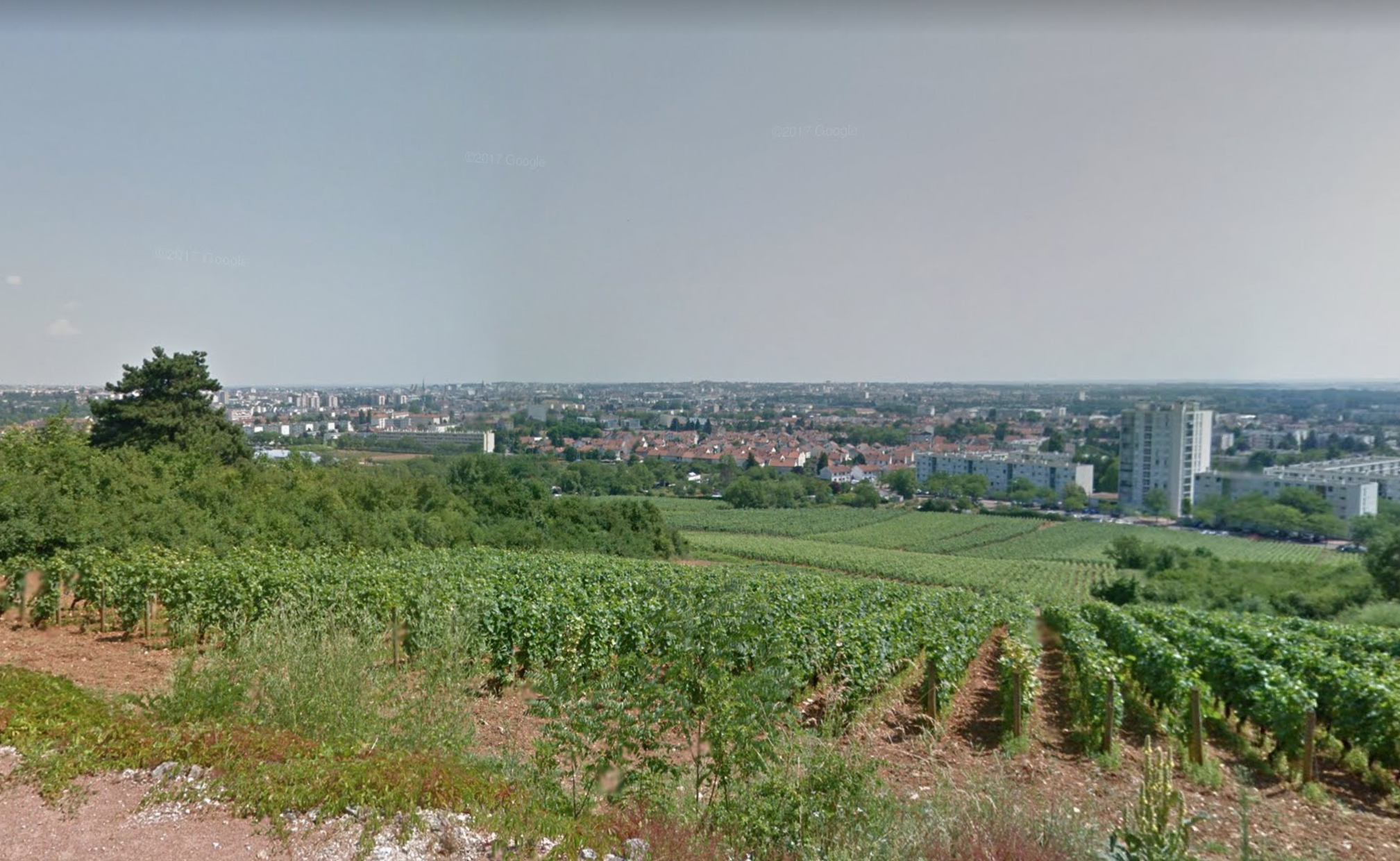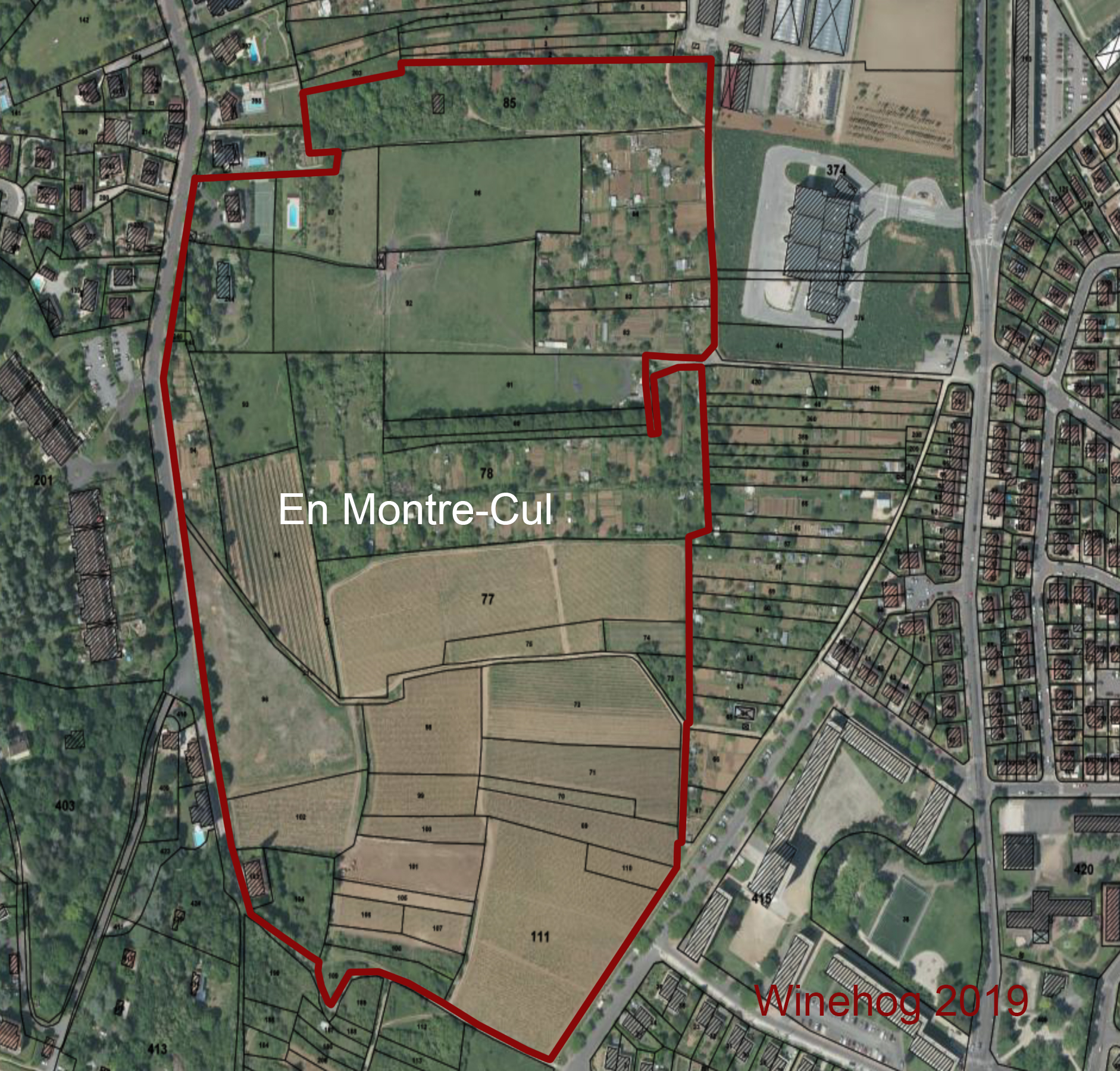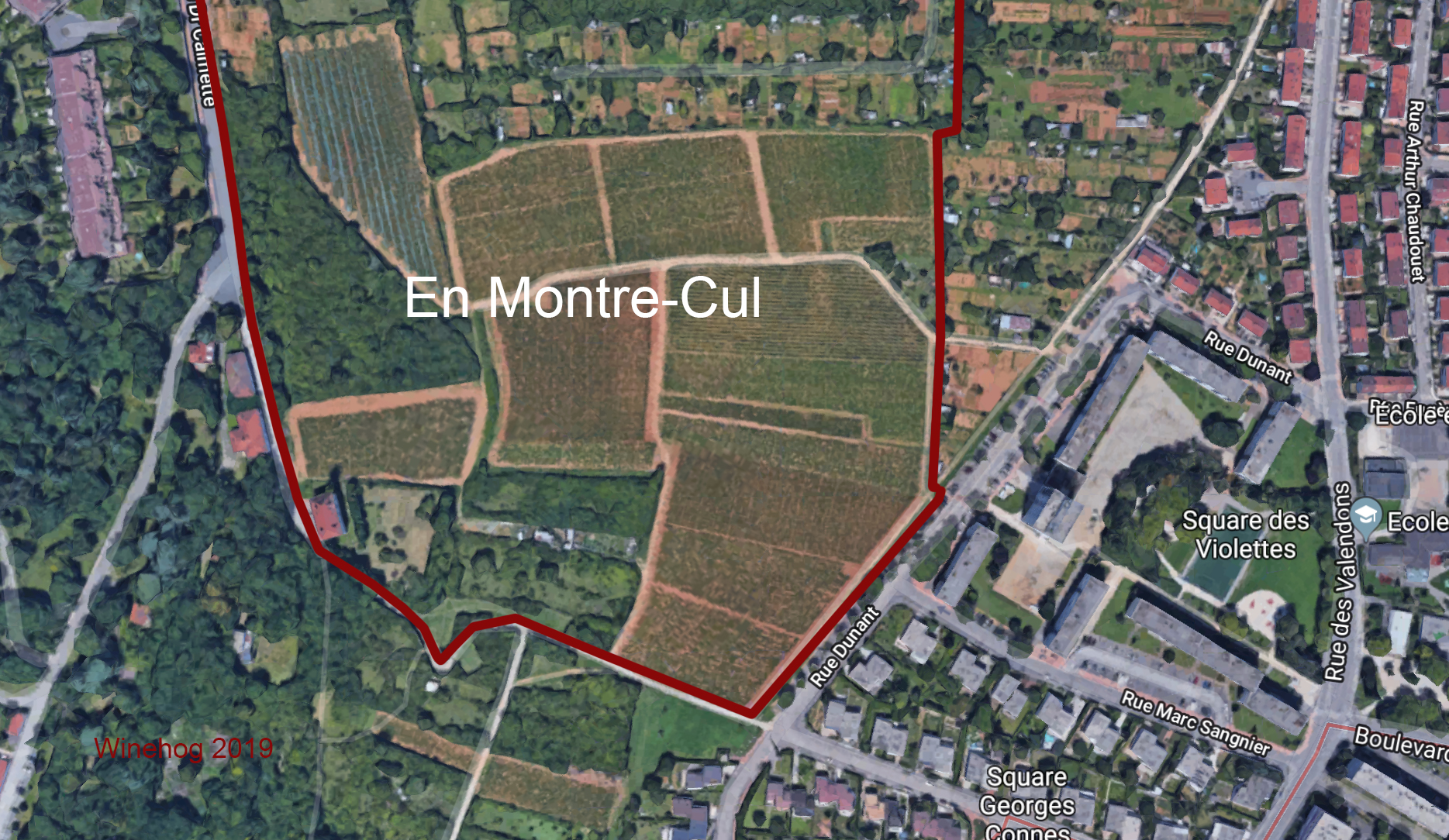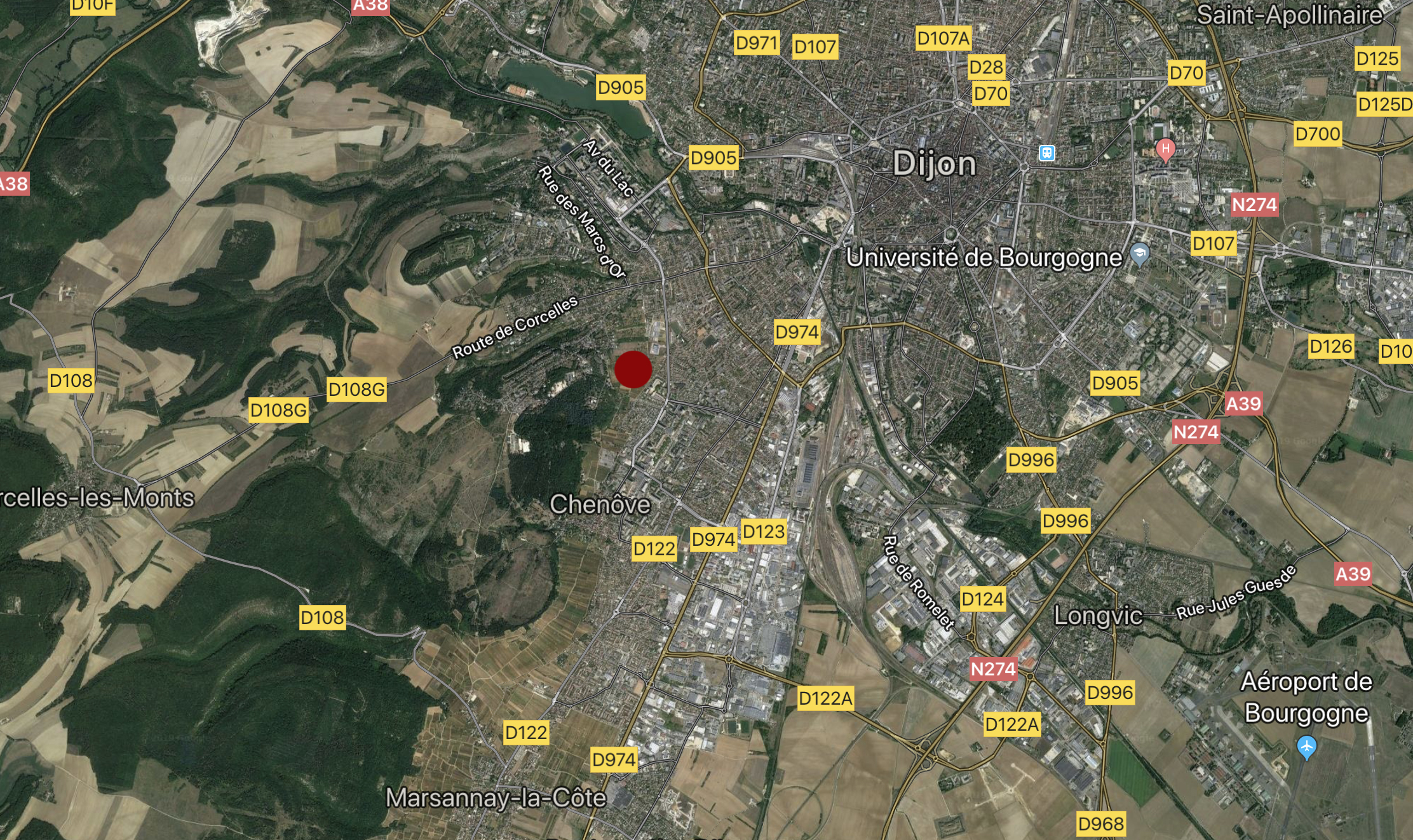One of the few lieu-dit vineyards in the central Dijon area is Montre-Cul, or Montrecul, located just at the city limit of Dijon.
On the cadastre maps the vineyard is called En Montre-Cul, and it is both an adorable and somewhat “notorious” label.
The red dot on the map above shows En Montre-Cul – located north of Marsannay and Chenôve, with Dijon’s outskirts at the end of the vine rows – see below.

Montre-Cul seen from the top of the vineyard
Bourgogne with a name – a lieu-dit
Pardon my French: “Dénomination géographique complémentaire «Montrecul » ou « Montre-Cul » ou «En Montre-Cul.» Vins tranquilles blancs, rouges ou rosés. Situé sur la commune de Dijon au lieu-dit de «Montrecul » dans le département de la Côte-d’Or au nord des Côtes de Nuits.”
Montre-Cul is a Bourgogne lieu-dit just like Chenôve’s Le Chapitre to the south of En Montre-Cul, where Jean-Yves Bizot is making a delightful wine that comes close to matching the quality of his Vosne-Romanée village. The area north and west of Marsannay should not be neglected, even if the vineyards are part of Dijon.
The vineyard of Bourgogne En Montre-Cul is located on a hillside to the west of Dijon. Montre-Cul is one of the rare regional climats that is officially allowed to put its name on the label. It proudly embodies the renaissance of the historic climats of Dijon, which had some 1,200 hectares under vine until the 19th century.
The vineyard Montre-Cul
The vines grow on an east-facing slope at 250-300 metres above sea level, at the northern end of the Côte de Nuits. The hill descends to the city with a 13% slope, no doubt behind the name “Montrecul,” which refers to a steep slope – or, one could say, the view on a steep slope!!
The lieu-dit is quite large, but it’s only the southern end of the area that is now used for wine production.

The wine-producing area of Montre-Cul is seen on the map below and covers around 4 ha in total.

The wines and terroir of Montre-Cul
The soil is made up of limestone rock with relatively soft white oolite from the Bathonian stage. This is covered by gravel and stratified slope deposits mixed with clay and red sandy loam, giving rise to fairly deep brown limestone soil.
You need to login as a Premium subscriber to read the rest of this article. If you are not a Premium subscriber, use the subscribe function and sign-up.


 - A true vin d’émotion – a Burgundy of passion
- A true vin d’émotion – a Burgundy of passion - A truly hedonistic wine – lively and enjoyable
- A truly hedonistic wine – lively and enjoyable - A vivacious wine for pure indulgance
- A vivacious wine for pure indulgance - A Vin Vif - fresh, energetic and with a light appearance
- A Vin Vif - fresh, energetic and with a light appearance
Leave a Reply
You must be logged in to post a comment.